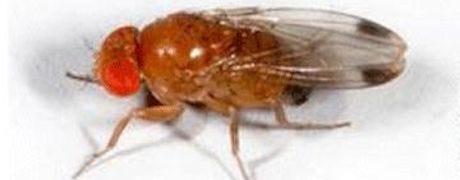July 14, 2013

Lincoln University's Integrated Pest Management (IPM) program started the monitoring system for the Spotted Wing Drosophila, (Drosophila suzukii), a new pest creating problems for the state's produce growers. The invasive insect is already causing damage to fruit producers on the West Coast and in New England area.
So far, the spotted wing drosophila (SWD) has been detected on three Missouri farms near the cities of St. Charles, Truxton, and Rogersville. These farms are the first to deploy monitoring traps.
University of Missouri professor of entomology, Bruce Barrett, also found several adult specimens in Howard County. The host was sweet cherry (from several trees).

Growers should look for spots on the wings and the two black bands on the forelegs of males. Females don't have those two features, and the identitiy can only be confirmed by dissecting the fly to look for the serrated ovipositor.
The SWD is a new species of fruit fly in the United States. It was first found on the West Coast in 2008, but has rapidly colonized many fruit producing regions of the country. SWD has a wide host range but is primarily a pest of berry crops (blackberries, blueberries, boysenberries, elderberries, strawberries), grapes and stone fruits (cherry, nectarine, peaches), as well as in high tunnel tomatoes.
How to identify SWD
Growers should look for the presence of spots on the wings and the two black bands on the forelegs of males. Females don't have those two physical attributes, so the only way to confirm is by dissecting the fly and look for the serrated ovipositor (it is a rather small structure located at the tip of the abdomen; it needs to be pulled). Researchers at Lincoln University are currently developing a guide sheet for identification and control and should be available soon, according to a news release.
While other Drosophila fruit flies (or vinegar flies) are quite common in the U.S., SWD is different in its ability to infest healthy fruit. Other fruit fly species typically infest over-ripe or damaged fruit. But female SWD have serrated ovipositors that can cut into healthy fruit to insert eggs. This leads to problems with deteriorating fruit in the field or with customers who find larvae in fruit after harvest. Once eggs are laid in the fruit, growers can no longer control it with a pesticide spray. Unfortunately, sprays needed to control the fly need to be made near harvest time. As such, the use of short residual pesticides, organic and conventional, are likely the most effective short term solution for this pest.
Missouri researchers will continue to monitor the problem during the summer growing season.
Source: University of Missouri Alternatives Center
You May Also Like




